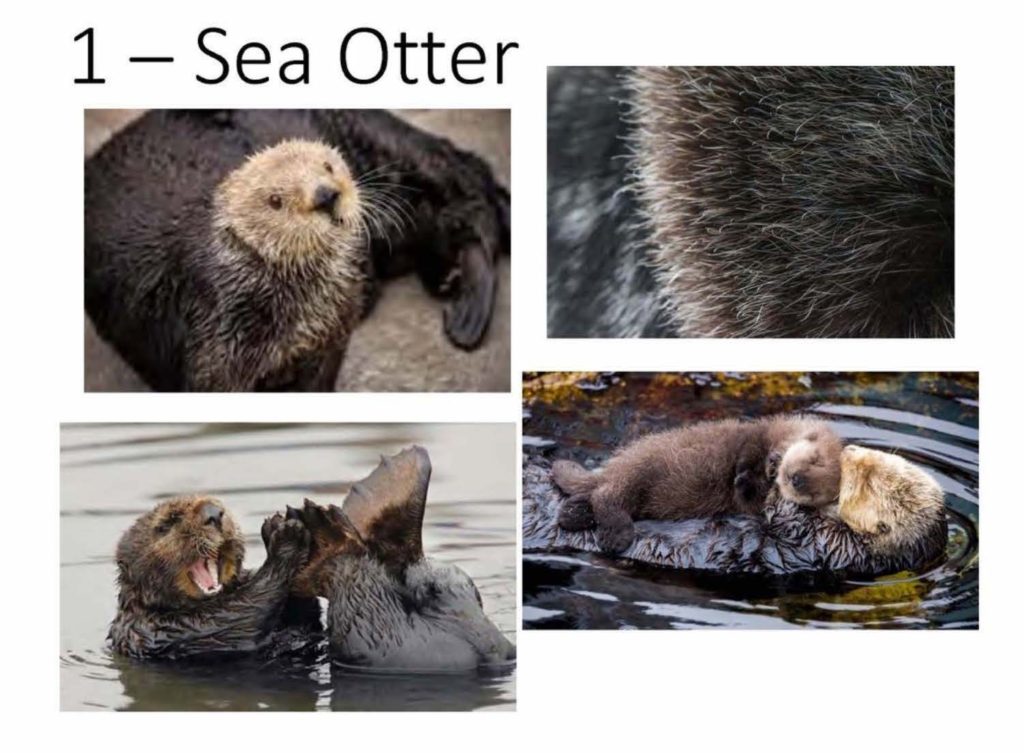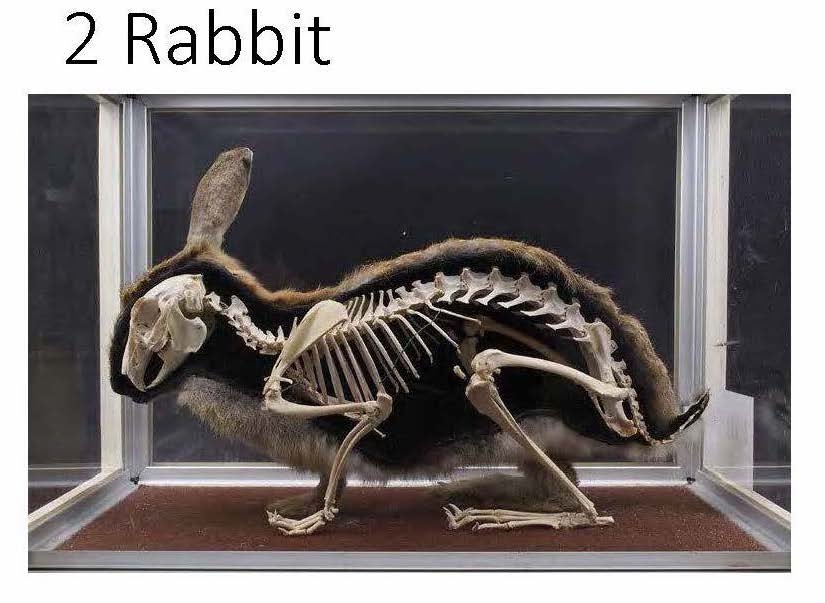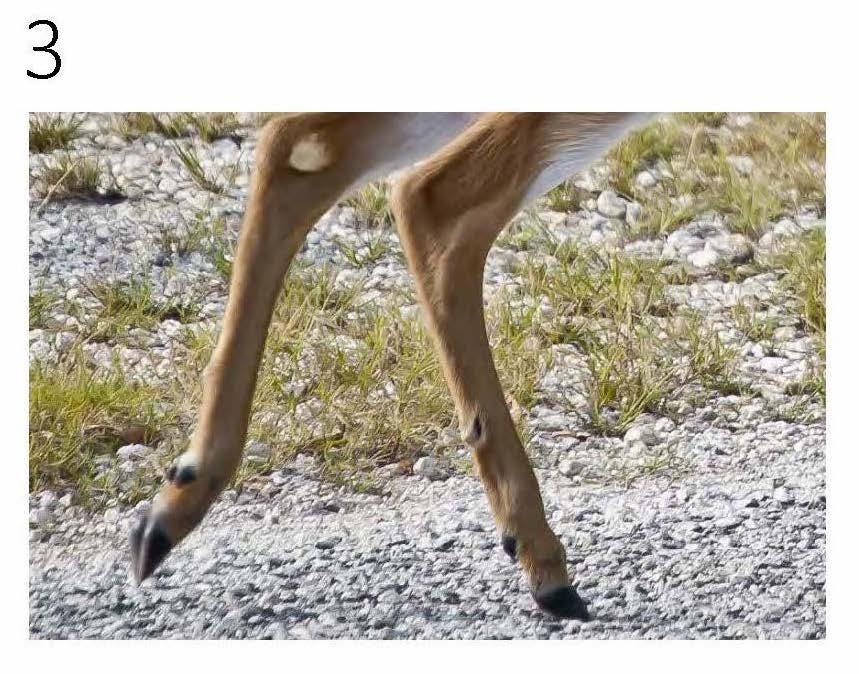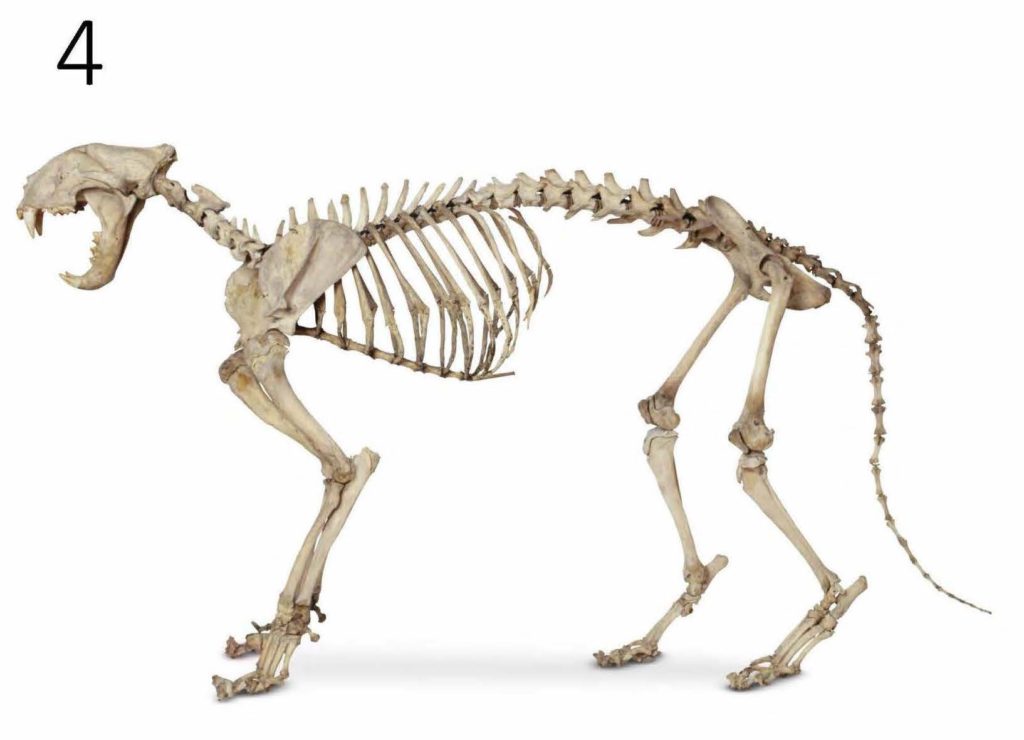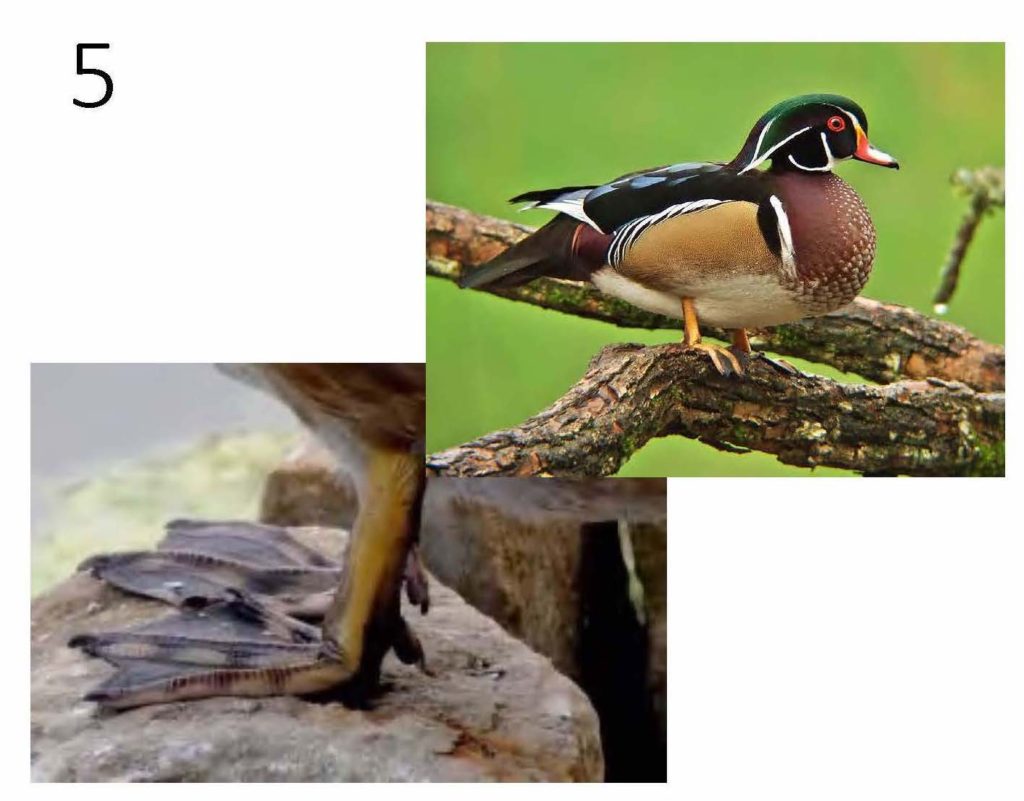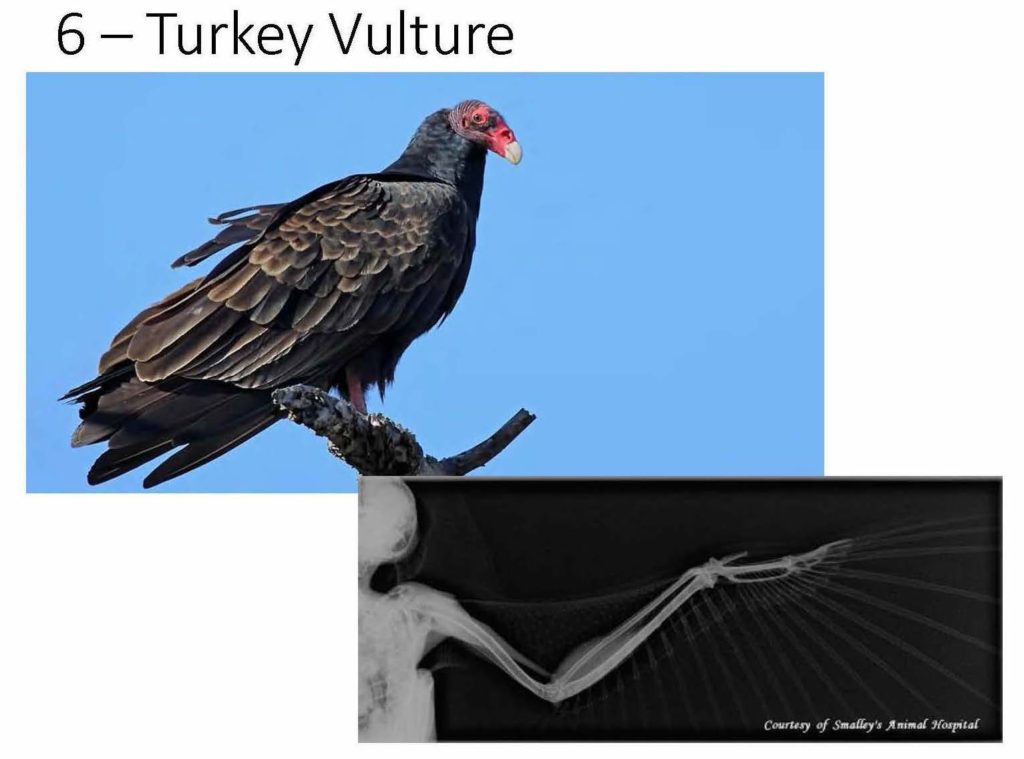Vertebrates move around their habitats in a variety of ways:
- Aquatic locomotion: feet/tail modified as flippers or fins, streamlined body shape
- Flight: forelimbs modified as wings
- Terrestrial locomotion: limbs long, feet small, may be well adapted for running
- Fossorial (digging): limbs with powerful claws, joints with levers adapted for powerful digging, limb bones sturdy
- Scansorial (climbing): limbs long, feet with curved claws for grasping
Specimen 1
- To which class of vertebrates does this organism belong?
- What type of habitat do you think this animal prefers?
- List two adaptations that could give a clue about its lifestyle.
Specimen 2
- Notice the leg bones on this skeleton. What type of locomotion is suggested by their length and shape?
Specimen 3
- To what animal do you think this leg belongs? What sort of locomotion do you think it uses?
Specimen 4
- This skeleton belongs to a house cat. Knowing what you do about the habits of domestic cats, describe two morphological characteristics that could assist this animal in its lifestyle.
Specimen 5
- What sort of locomotion does this animal use? Explain what physical characteristic helped you determine the form(s) of locomotion.
Specimen 6
- What sort of locomotion does this animal use?
- How do the bones in its “arms” correspond to the bones in your own body?
Follow-up Questions
- What are the anatomical structures you used to allow you to match these specimens with each form of locomotion?
- See above
- What are the characteristics you identified on each structure to make the associations?
- Which of these structures are analogous?
- Which of these structures are homologous?
